
Artificial Intelligence (AI) is transforming the landscape of document and knowledge management. By automating repetitive tasks and providing intelligent insights, AI tools can significantly enhance efficiency and productivity. This overview will explore the role of AI in document management and process automation, the types of AI features available for different project goals, and tips on identifying areas within your organization that could benefit from AI.
The Role of AI in Document and Knowledge Management
AI is revolutionizing the way we handle and process documents, making knowledge management more efficient and intuitive. Let’s dive into how AI technologies are making a significant difference:
- Streamlined Organization through Automated Document Classification: Documents are automatically sorted into categories by AI, streamlining organization and retrieval.
- Insightful Decision-Making with Data Extraction and Analysis: By extracting and analyzing data from documents, AI provides valuable insights that inform better decision-making.
- Efficiency in Routine Tasks with Workflow Automation: Document approval processes and other routine tasks are expedited, thanks to AI, freeing up valuable employee time.
- Improved Accessibility with Enhanced Search Capabilities: AI-enhanced search engines decipher context and semantics, delivering more relevant search results.
- Compliance Assurance and Risk Mitigation: AI monitors documents to ensure regulatory compliance and to identify potential risks proactively.
- Elevated Customer Support with Chatbots and Virtual Assistants: In client portals, these AI tools offer immediate, automated support, enhancing the customer experience.
Applying AI in Real-World Challenges
Consider the case of ECM Netherlands, a nonprofit active across 34 European countries. They faced two significant challenges: managing multilingual training requirements and the considerable time needed for content generation.
The Solution: By adopting FuseBase AI, ECM Netherlands transformed its approach to creating training materials. This move drastically reduced manual labor and saved significant amounts of time. With more efficient content creation and translation, the NGO can now focus more on its primary missions, directing resources and attention where they’re needed most.
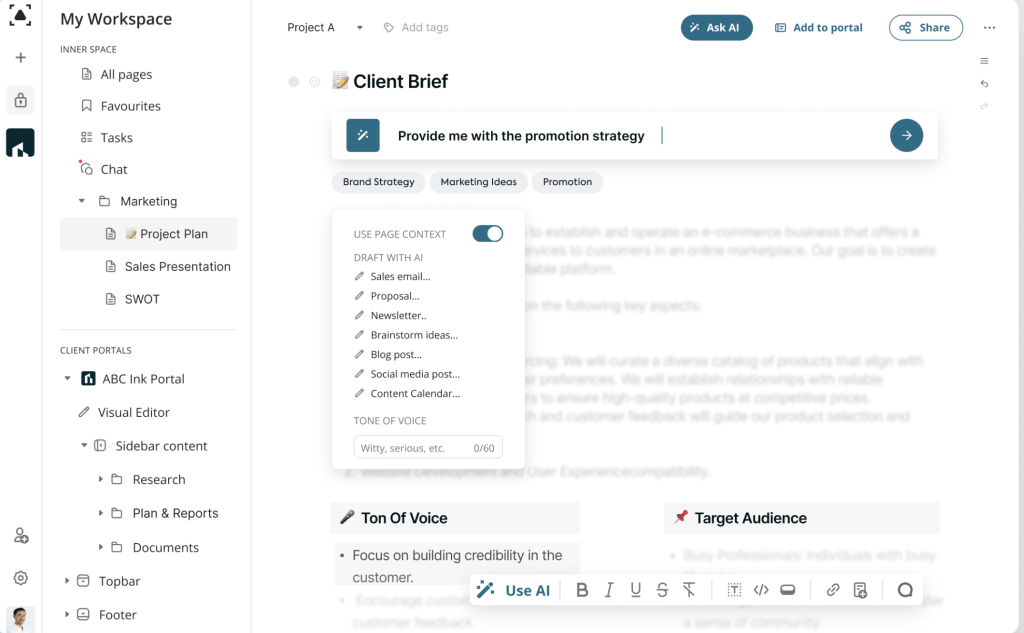
Business Benefits of Using AI in Workflows
AI tools can significantly enhance various processes within a company, leading to improved efficiency, accuracy, and decision-making. Here are some key areas that benefit from AI integration:
Customer Service
AI-powered chatbots and virtual assistants are revolutionizing customer service by handling routine inquiries, such as order status or account information, which allows human agents to focus on more complex and nuanced customer problems. Additionally, these tools provide 24/7 availability, unlike human agents, thereby improving customer satisfaction and reducing wait times. Furthermore, AI can analyze customer data to offer personalized responses and recommendations, enhancing the overall customer experience.
Marketing
In the realm of marketing, AI is transforming strategies through its ability to analyze vast amounts of data to identify trends and insights that human analysts might miss, thereby creating more effective marketing campaigns. By understanding customer behavior and preferences, AI can tailor marketing messages to individual customers, increasing engagement and conversion rates. Moreover, AI’s predictive analytics capabilities allow it to forecast future customer behavior based on historical data, enabling marketers to proactively adjust their strategies for better results.
Supply Chain Management
AI enhances supply chain operations by improving demand forecasting, as AI algorithms can predict future demand for products, helping companies manage inventory more effectively and reduce stockouts or overstock situations. It also optimizes inventory levels by analyzing sales data, seasonal trends, and other factors, ensuring that the right amount of stock is always available. Additionally, AI can streamline logistics by optimizing routes, reducing transportation costs, and improving delivery times.

Human Resources
In the field of human resources, AI is reshaping HR practices by speeding up and improving the accuracy of talent acquisition processes, such as screening resumes and applications to identify the best candidates based on predefined criteria. AI tools can also monitor employee sentiment through surveys and feedback, providing insights into morale and engagement levels. Furthermore, AI can track employee performance metrics and offer data-driven recommendations for improvements, helping managers make more informed decisions.
Financial Operations
AI-driven solutions are enhancing financial operations by detecting fraud through the analysis of transaction patterns to identify suspicious activities and potential fraud in real-time, thus reducing financial losses. AI models can assess various risk factors and predict potential financial risks, enabling companies to take proactive measures. Additionally, AI can automate the generation of financial reports, ensuring accuracy and compliance while freeing up time for financial analysts to focus on strategic tasks.
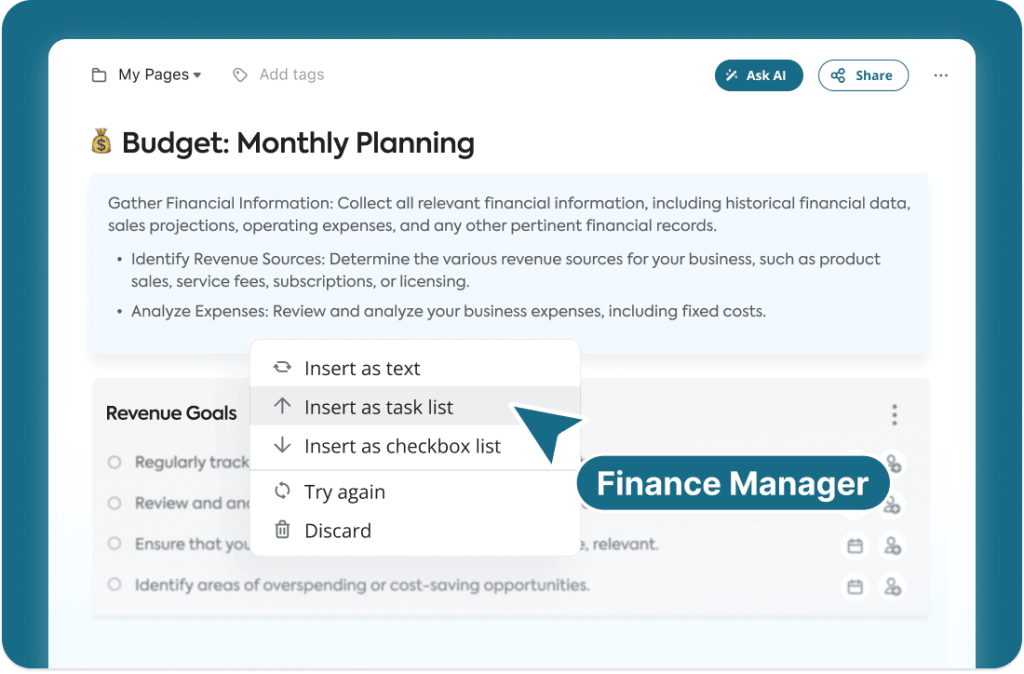
How to Use AI for Everyday Tasks: 10 Examples
For teams across industries, the integration of AI tools promises enhanced efficiency, accuracy, and innovation. However, the key to unlocking these benefits lies in a thoughtful approach to introducing and implementing these technologies. Let’s walk through the foundational steps for integrating AI into your team’s routine, using FuseBase AI as a prime example of how seamless and impactful this process can be. It has a user-friendly interface and must-have functions so you can easily understand how AI systems work overall.
Identify Areas in Your Organization That Need AI Help
Identifying the right areas to implement AI can be challenging. Here are 5 questions to help you get started:
- Assess Repetitive Tasks: Are there tasks in your organization that are repetitive and time-consuming, which could be candidates for automation using AI?
- Evaluate Data-Intensive Processes: Do you have processes that involve large volumes of data, and could AI help in analyzing and extracting valuable insights from this data?
- Consider Customer Interaction Points: Are there areas where your organization interacts with customers that could benefit from AI-powered chatbots and virtual assistants?
- Review Compliance and Risk Management Needs: Does your organization deal with regulatory compliance, and could AI help monitor and manage risks more effectively?
- Analyze Current Pain Points: Have you gathered feedback from employees about current pain points and inefficiencies, and could AI solutions address these issues?
Introduce AI Tools to Your Team
Begin by pinpointing the tasks or areas where AI can bring the most value. Look for repetitive, time-consuming tasks that can be automated or areas where AI can provide insights beyond human analysis. Not all AI tools are created equal. Select a solution that aligns with your team’s needs and goals. Consider factors such as ease of use, integration capabilities, and the level of support provided.
Change can be daunting. Demystify AI by educating your team on the benefits and functioning of AI tools. There are two main approaches:
- Become a Leader: Engage your employees directly by clearly communicating the objectives for implementing AI, including the expected outcomes and how success will be measured. This sets a clear direction and motivates your team to embrace the change.

- Seek Onboarding Support: Utilize the onboarding team of the chosen AI software. For example, FuseBase or Clickup provide customer support and training sessions to ensure everyone feels comfortable and competent in using the new technology.
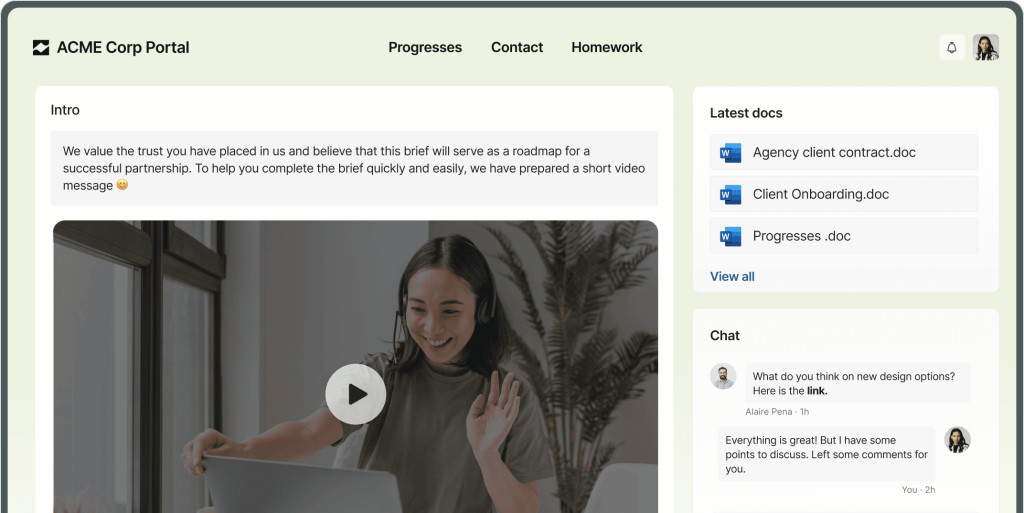
1, 2, 3… Implement!
Once the groundwork is laid for introducing AI to your team, the next step is implementation. Incorporating AI into information management strategies requires careful planning and commitment at all levels of an organization. Regardless of the business size, starting small with a clear vision and scaling based on success and learning can optimize the benefits of AI integration.
Begin by integrating AI into a few selected tasks or processes. This allows your team to adapt to the new technology and provides insights into how to scale the AI solution effectively across other areas. Here is a list of tasks you can start with:
1. Email Filtering and Management: Use AI tools to sort, label, and archive emails, reducing manual email management tasks.
2. Social Media Management: Use AI-powered tools to analyze engagement and identify trends across social media platforms.
3. Create AI-powered Documentation: You can utilize tools, such as FuseBase or Monday.com, to create detailed SOPs and step-by-step guides, ensuring consistency and accuracy in operational processes.
4. Content Creation: Employ AI-driven content creation tools for marketing materials, blogs, and social media posts to save time on content production. Whether you need images for social media, infographics for blogs, or eye-catching designs for marketing materials, Canva AI can help you create visuals that enhance your content and attract attention.
5. Advanced Customer Data Analysis: Deploy AI tools for deeper insights and analytics from business operations, customer feedback, and trends.
6. Project Management: Implement AI-powered project management tools to forecast project timelines, allocate resources, and track progress. Customization and integration capabilities, as demonstrated by FuseBase’s white-label client portals, show how AI can be tailored to fit specific team and client needs. This not only strengthens brand identity but also improves access to information and facilitates seamless collaboration.
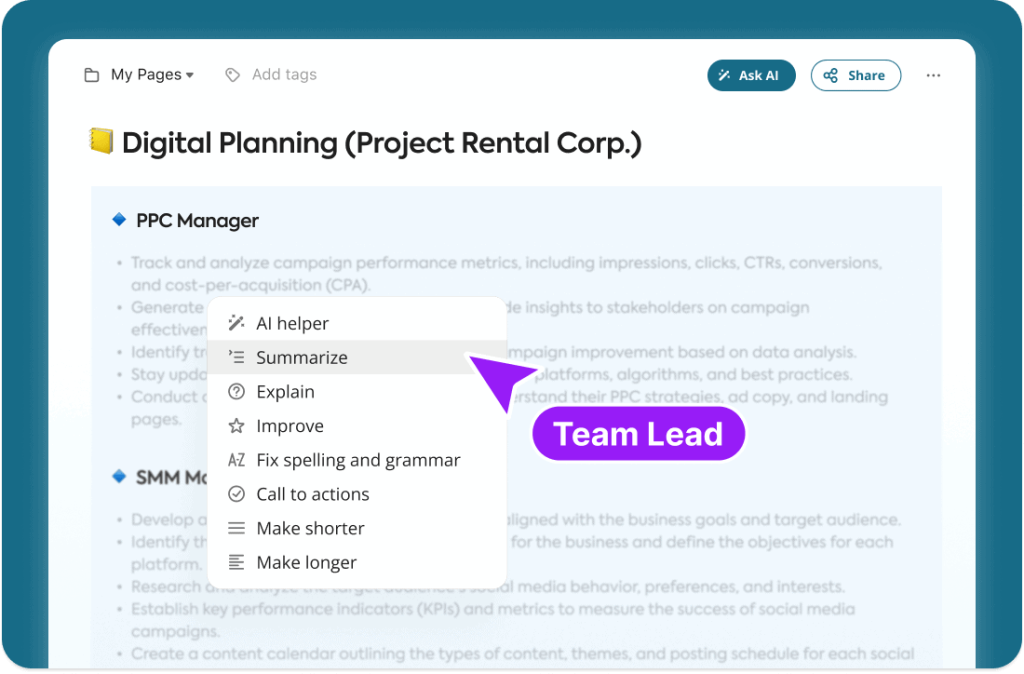
7. Recruitment and HR: Use AI for screening resumes, scheduling interviews, and initial applicant communications to streamline the hiring process. You can also employ AI in the HR department for strategic talent acquisition, workforce planning, and employee engagement analysis.
8. Data Entry and Processing: Implement AI software to automate repetitive data entry tasks, including document processing and standard operating procedures, to improve accuracy and efficiency. Prezi AI leverages advanced information analysis to create dynamic and engaging presentations, transforming raw data into visually compelling narratives effortlessly.
9. Market Research and Analysis: Use AI for automated market research and competitor analysis, providing actionable insights more efficiently.
10. Personalized Marketing Campaigns: Leverage AI-driven marketing tools to curate personalized marketing campaigns based on customer data. Advanced tools such as FuseBase, Clickup, and Monday.com can provide you with answers based on your team’s knowledge and expertise collected in the team workspace.
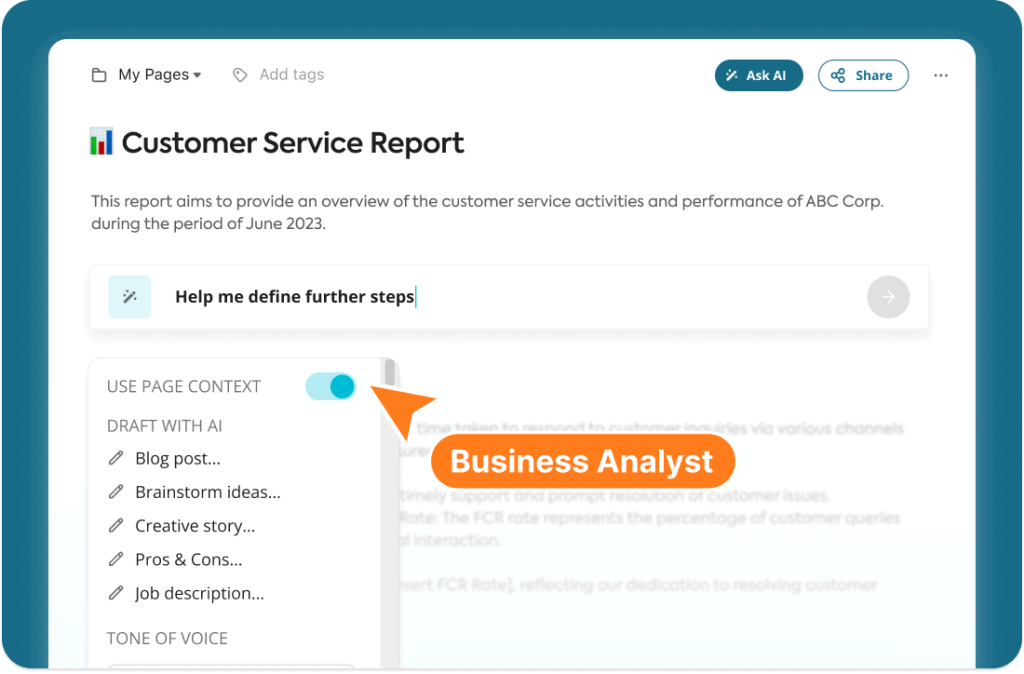
Summary
Incorporating AI into everyday tasks can significantly enhance efficiency, accuracy, and decision-making across businesses of all sizes. AI features not only save time but also ensure accuracy and consistency in process documentation, making it easier for teams to collaborate and share knowledge.

